How to Craft a Small Business Content Marketing Strategy in 7 Steps
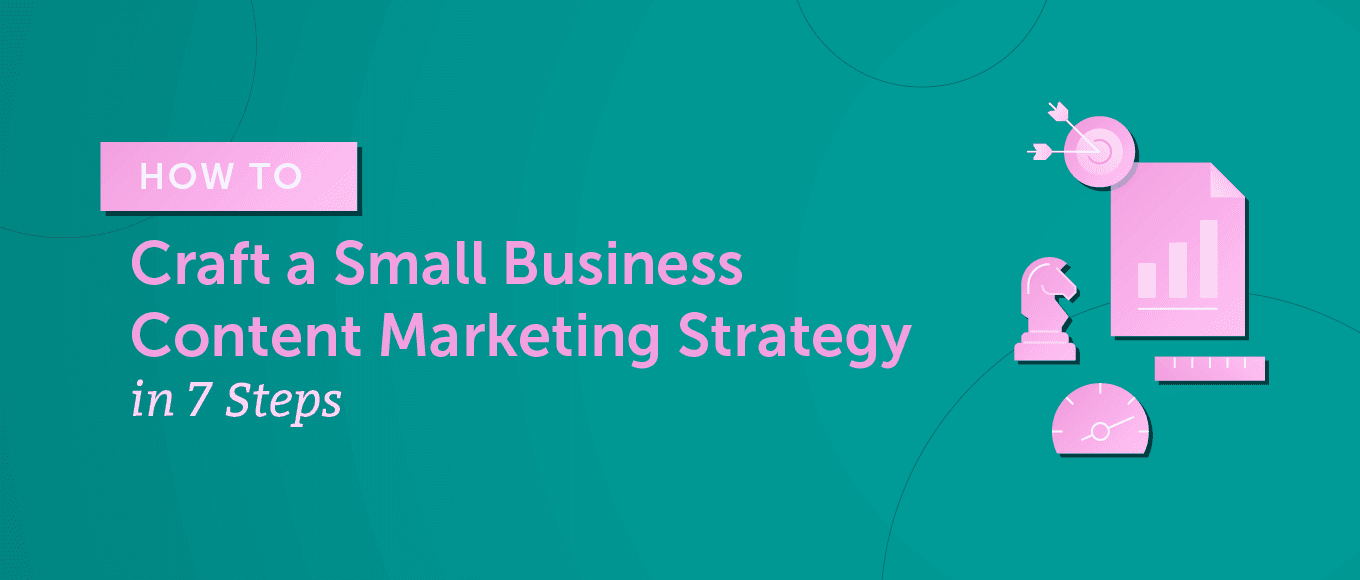 For a long time, marketing was all about getting your brand in front of customers and making sure they knew you existed.
Historically, that has meant advertisements.
Print ads have been around since at least the 1620s. From advertising specialty cures for consumption to pamphlet printing services, they quickly became a standard business activity that drove early modern economies. Ads were the only way – after word of mouth – to let potential customers know you were open for business.
However, somewhere along the road to the digital age, something happened. Suddenly, we found ourselves exposed to upwards of 5,000 ads per day. We came to see their primary purpose as being to not to inform us, but to annoy us.
Advertisements fell from grace so spectacularly that adblockers are now built-in to browsers.
That left businesses large and small scrambling for another solution to increase their brand awareness – something that wouldn’t annoy, fall into irrelevance or get blocked.
Enter content marketing. It’s a concept that’s been around for a little over a century and it’s making a big comeback in the way we think about advertising.
For small businesses, it’s proving especially valuable. It’s a way to “advertise” that competes with larger competitors – without being annoying, expensive, or ignored.
All SMBs need content marketing to survive. Here’s what it is and how small businesses can craft a strategy that works.
For a long time, marketing was all about getting your brand in front of customers and making sure they knew you existed.
Historically, that has meant advertisements.
Print ads have been around since at least the 1620s. From advertising specialty cures for consumption to pamphlet printing services, they quickly became a standard business activity that drove early modern economies. Ads were the only way – after word of mouth – to let potential customers know you were open for business.
However, somewhere along the road to the digital age, something happened. Suddenly, we found ourselves exposed to upwards of 5,000 ads per day. We came to see their primary purpose as being to not to inform us, but to annoy us.
Advertisements fell from grace so spectacularly that adblockers are now built-in to browsers.
That left businesses large and small scrambling for another solution to increase their brand awareness – something that wouldn’t annoy, fall into irrelevance or get blocked.
Enter content marketing. It’s a concept that’s been around for a little over a century and it’s making a big comeback in the way we think about advertising.
For small businesses, it’s proving especially valuable. It’s a way to “advertise” that competes with larger competitors – without being annoying, expensive, or ignored.
All SMBs need content marketing to survive. Here’s what it is and how small businesses can craft a strategy that works.
Download Your Small Business Content Marketing Strategy Template
Did you know that having a documented marketing strategy can increase your odds of success by 313%? That's what the data says, and the data doesn't lie. Download your SMB content strategy template below and make it easy to put together a plan:How to Craft a Small Business Content Marketing Strategy in 7 Steps by @JuliaEMcCoy
Click To TweetWhat Is Content Marketing?
According to the Content Marketing Institute, content marketing is a marketing approach that emphasizes the creation and distribution of quality content. It posits that a targeted audience will be more likely to shop with you if you deliver valuable and relevant information consistently.- A face wash company might publish a blog article on home remedies for acne, ending the blog with a CTA that links to the company’s e-commerce site.
- A marketing company might distribute a free ebook that discusses how to set up email campaigns, with their contact information provided at the end for interested parties.
- An interior design firm might create an online quiz to help potential clients identify their decor style, then follow up results with recommendations to their different services.
- People seek it out. Has the piece of content been viewed millions of times? That’s an indicator of quality and relevance. People want to consume this article, video, or Instagram post.
- It’s targeted. Content marketing isn’t necessarily about making something go viral, although it’s never a bad thing when it does. Rather, it’s about targeting an audience in just the right ways that they learn to associate your brand as an authority on a topic.
- It emphasizes the development of relationships with readers. Content marketing emphasizes relationships to attract and retain a defined audience. Does it seem like the company is more invested in making you a smarter, more well-informed individual? It’s using a content marketing strategy.
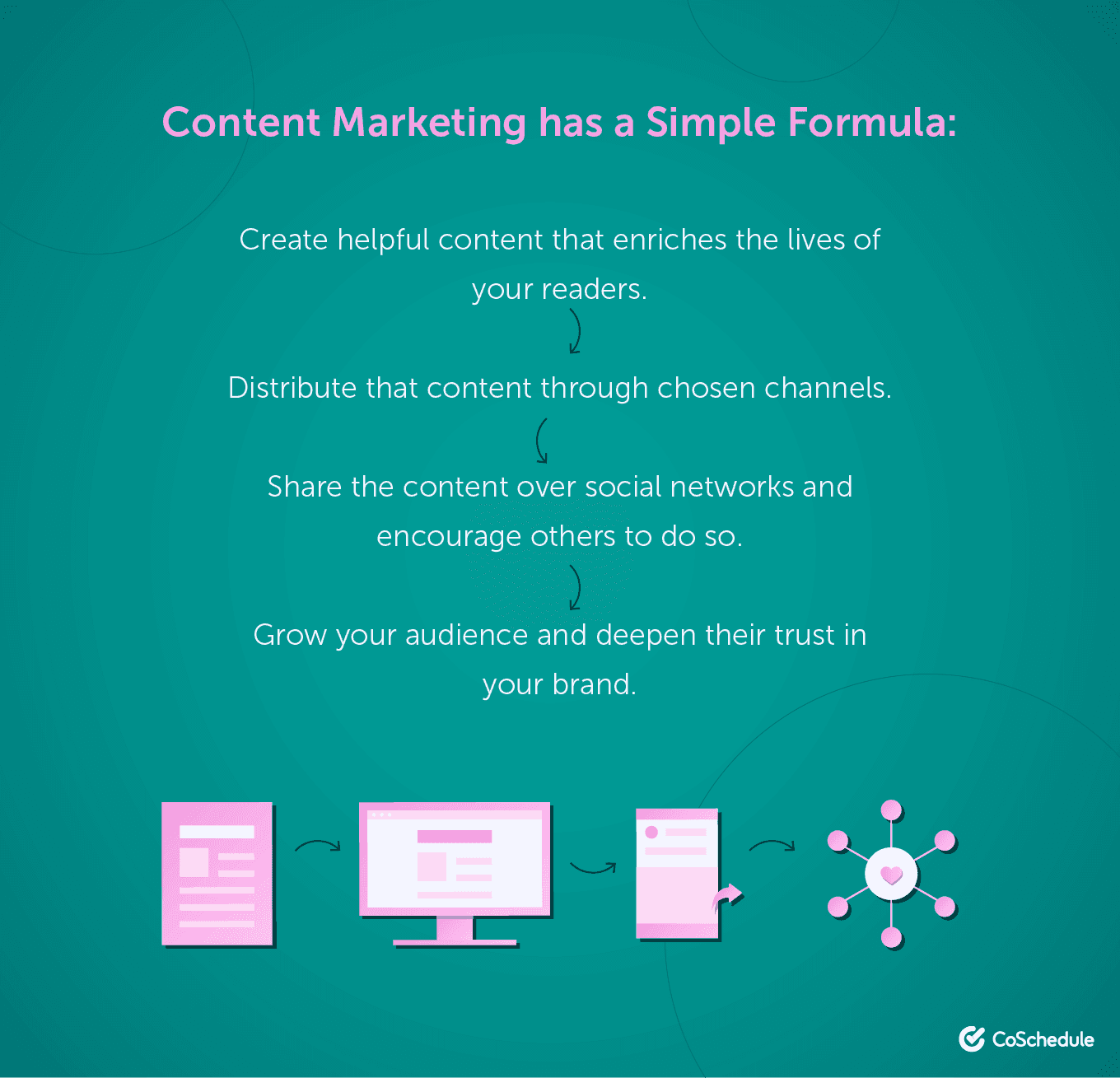
How to Create a Small Business Content Marketing Strategy in 7 Steps
Content marketing is an efficient, effective, and very economical way to drive traffic to your site. According to The Manifest, at least 53 percent of companies now use it to attract and retain customers. Here are seven steps to creating a small business content marketing strategy that works.1. Establish Your Mission or Goals
Like all marketing strategies, content marketing should serve a specific purpose and meet specific goals. Make these goals specific, measurable, attainable, relevant, and time-based. In other words, use the SMART strategy to create them. SMART goals look like this:- Improve your search engine ranking to land on the first page within three months.
- Acquire 1,000 email subscriptions in 30 days.
- Increase sales by 25% from a specific market segment within two weeks.
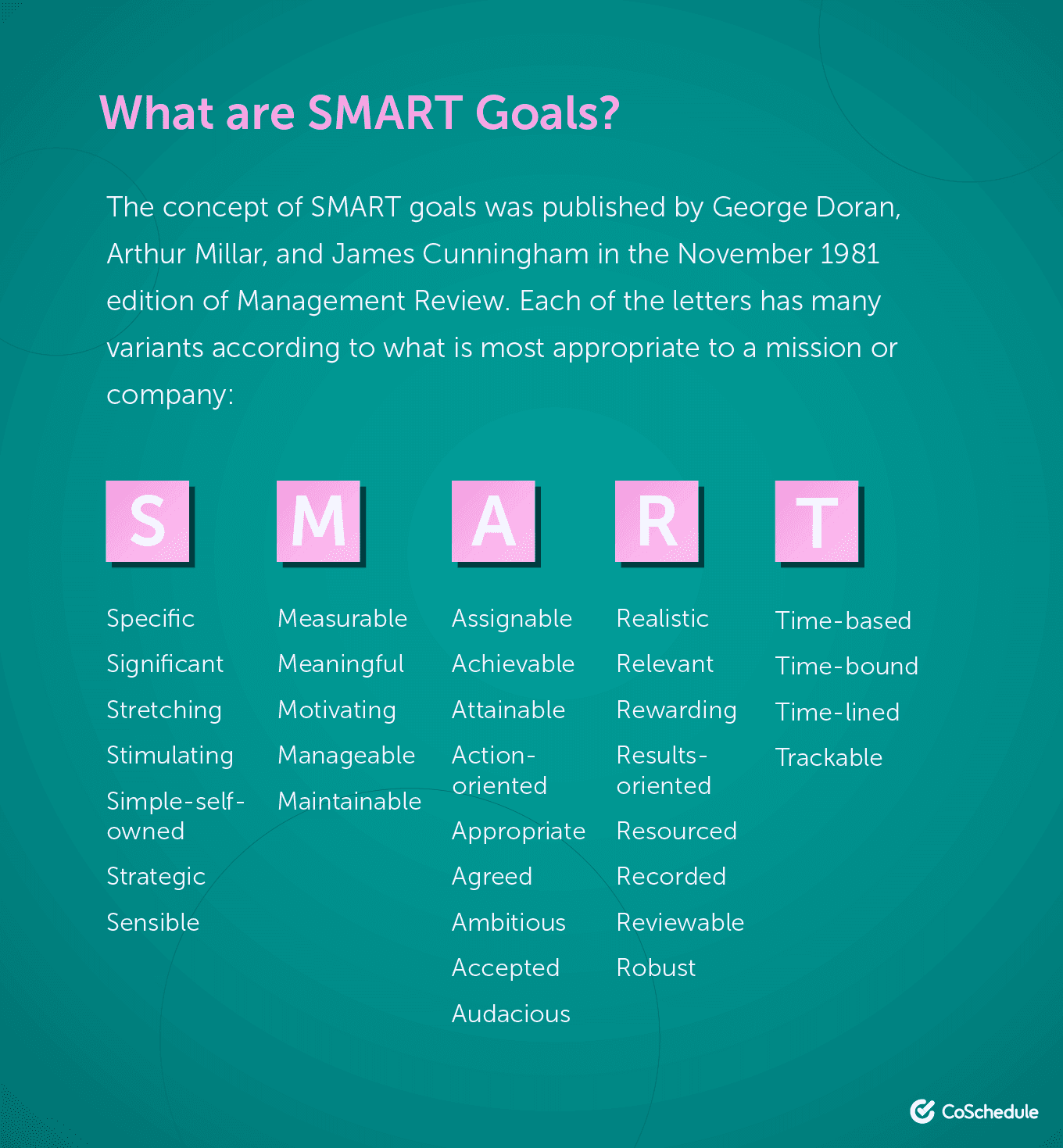
2. Identify Your Performance Indicators
Choose key performance indicators, metrics that directly reflect how well you’re moving towards your goals. This might include (but is certainly not limited to):- Unique page views
- Referral rate
- Number of downloads
- Net revenue
- Conversion rates
3. Select Your Audience & Content Channels
Content marketing relies on having a clearly defined audience. You aren’t trying to reach everyone and anyone. You’re crafting a specific message which holds value to a specific market segment full of people who are most likely to purchase your product or service. Collect demographic data from your site or social media platform. [BS4] Google Analytics can help with this, but so can many of the features and reports within CoSchedule. Once you’ve figured out who’s reading your existing content (or who isn’t), you’ll get a sense of where you’ve already developed a viable online presence. Follow it up by homing in on the channels that will get you the most exposure and engagement.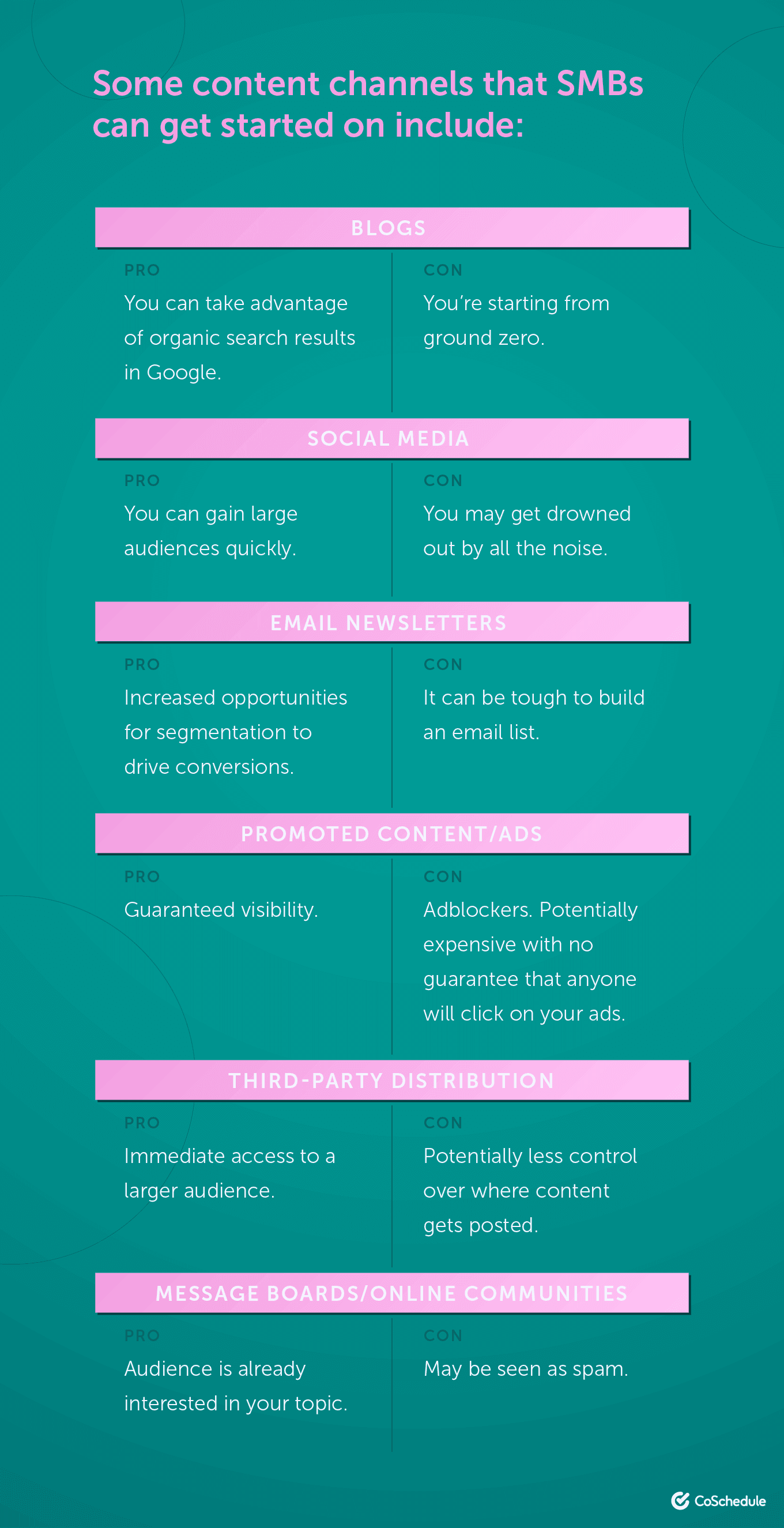
4. Establish a Schedule
So, you’ve got your KPIs, your audience, and your channels. You might be tempted to start flooding them with your insights, giveaways, and thought-provoking articles. After all, if one post is effective, then ten must be ten times as effective, right? Do NOT do this. Instead, start with a basic posting schedule to avoid freaking out your followers with content overload. For blogs, consider a weekly post (same day, same time) to get into the habit. Social media posts should range between once daily and a few times each week. There’s actually science behind how often to update your company’s Facebook or Instagram. Quite a bit of the evidence out there that suggests posting too frequently can be just as damaging as not posting enough, or posting inconsistently. Create a schedule because:- Consistency is key. Consistency helps train readers to come back, to anticipate new material, and indicate that you’re a reliable, active source of information.
- It will help you vary the content. Seeing the big picture helps you spot opportunities for variety to enrich your offerings.
- You’ll save time and energy. A schedule is like a road map. Knowing what you’re going to do next helps you join the ranks of the 36 percent of content creators with efficient project workflows.
- It supports KPI tracking. One of the features of a SMART goal is that it’s time-based. Visualize your time-based goals with a calendar.
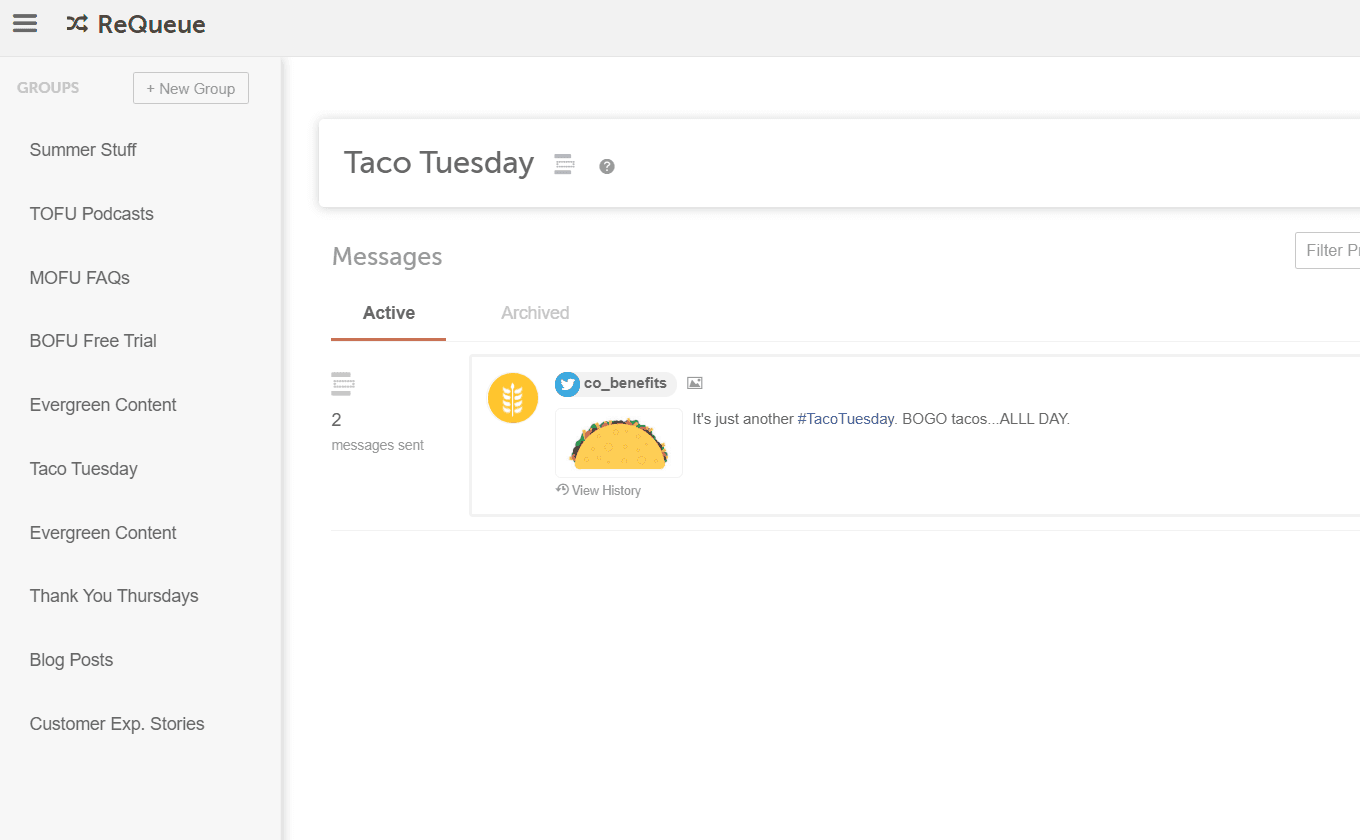 Use tools like ReQueue by CoSchedule to create a consistent messaging or posting schedule.
Use tools like ReQueue by CoSchedule to create a consistent messaging or posting schedule.
5. Craft Your Content and Distribute It to Your Market
With all your research assembled, it’s now time to spread your genius insights far and wide to attract a loyal following. Kind of. Writing great content is just as important as the quality of your ideas. You can be a creative genius, but it won’t matter if your content is lackluster, rushed, and weak. Even Google won’t be impressed. Craft your content as thoroughly as you researched your audience and content channels. Check out these 26 surprising rules for creating amazing content – just in case. Here are some additional posts that will walk you through how to create and promote your content:- The Best Way to Get Organized With a Content Marketing Editorial Calendar
- How to Write Amazing Posts With This Awesome Blog Writing Checklist
- How Often to Post on Social Media? [Proven Research From 14 Studies]
- 25 Actionable Social Media Marketing Tactics That Will Get Results Right Now
- 21+ Easy Ways to Build an Email List That Will Skyrocket By 140% in 1 Year
- Everything You Need to Know About Writing Awesome Email Subject Lines
- How to Promote Your Blog With 107 Content Promotion Tactics
6. Track the Results
Within the first hours of delivering your content, you’ll begin to see how people respond. Pageviews, likes, and share represent some of the first metrics indicating engagement. Over time, you’ll also see conversion rates, qualified leads and closes, or change in revenue. There are many tools out there to help you track KPIs. Here are a few you may consider:- Google Analytics. It’s free and easy to measure page views, traffic sources, keyword performance, and more.
- Databox. Databox offers an array of powerful tools for tracking almost any metric.
- Excel. If you’re comfortable with Excel, you can create your own KPI tracking spreadsheets. This works best with metrics like revenue, subscriptions or referrals.


